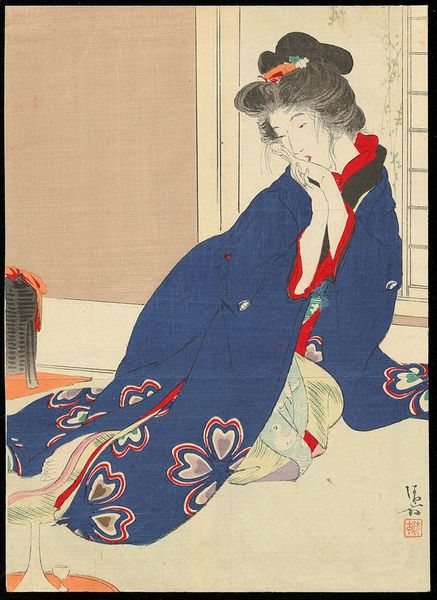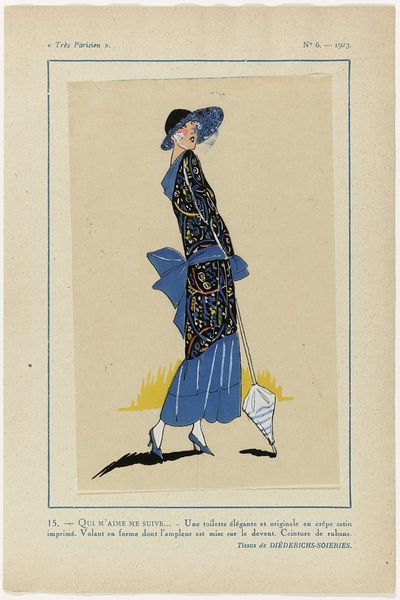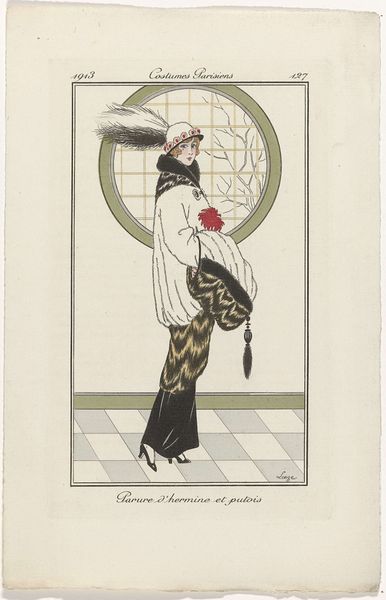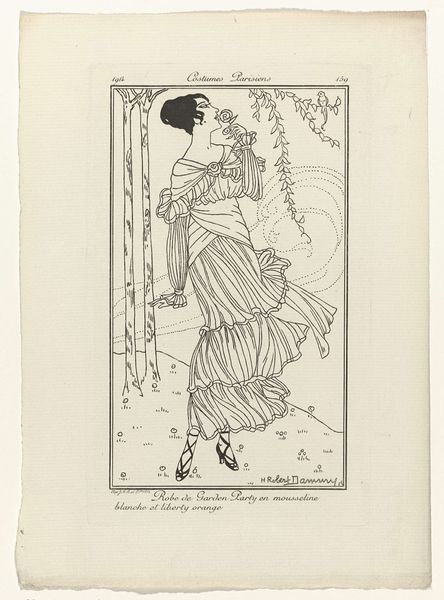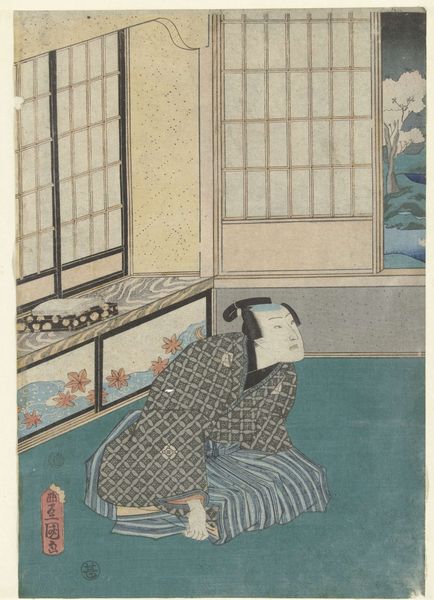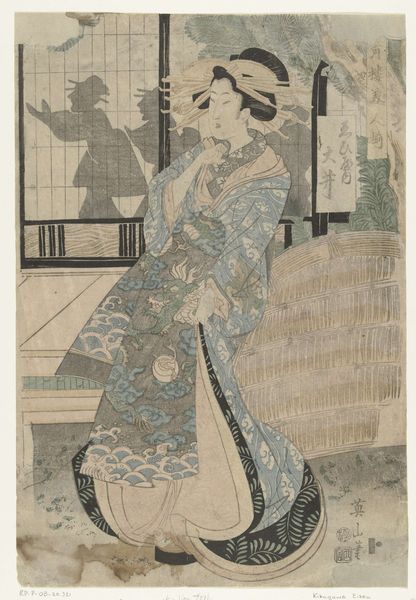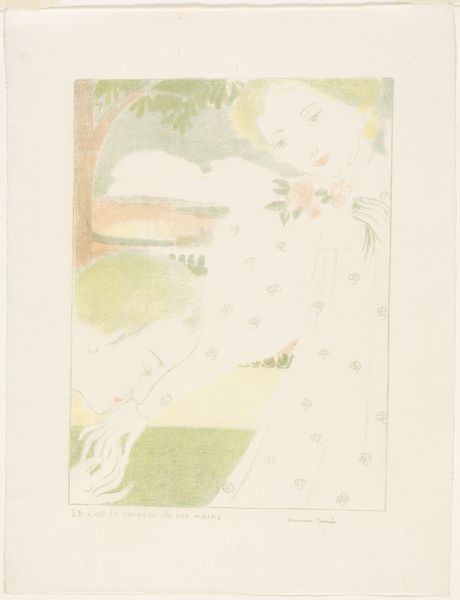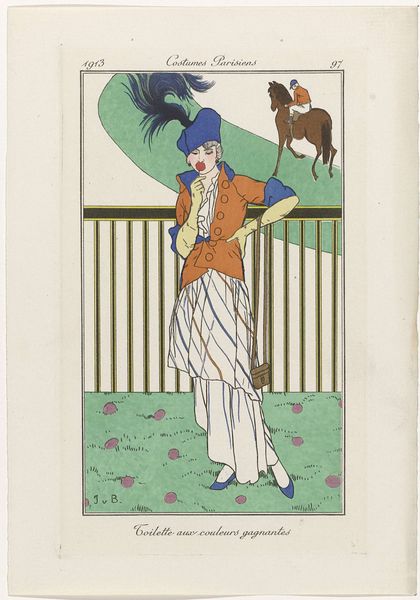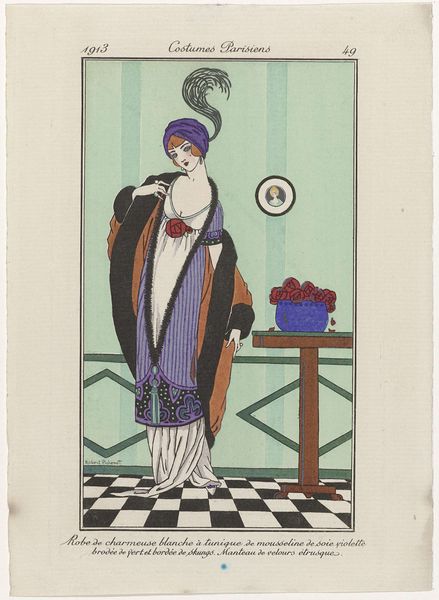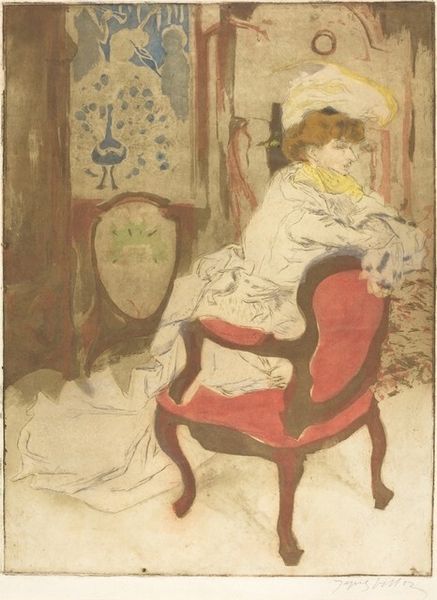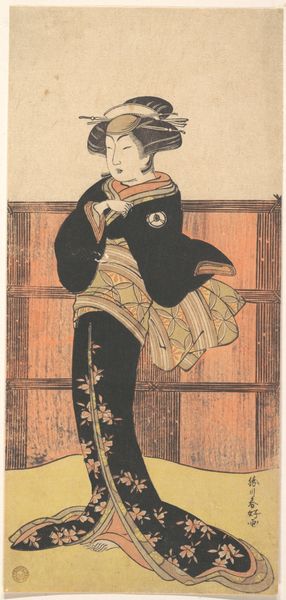![['Journal des Dames et des Modes: the Fashion Illustrators', 'Journal des Dames et des Modes: Fashion News'] by Monogrammist MFN](/_next/image?url=https%3A%2F%2Fd2w8kbdekdi1gv.cloudfront.net%2FeyJidWNrZXQiOiAiYXJ0ZXJhLWltYWdlcy1idWNrZXQiLCAia2V5IjogImFydHdvcmtzL2NmZDI5NjkwLTljMjktNGZiNS05ODAxLTJkYzg5ZWZmN2ZhMS9jZmQyOTY5MC05YzI5LTRmYjUtOTgwMS0yZGM4OWVmZjdmYTFfZnVsbC5qcGciLCAiZWRpdHMiOiB7InJlc2l6ZSI6IHsid2lkdGgiOiAxOTIwLCAiaGVpZ2h0IjogMTkyMCwgImZpdCI6ICJpbnNpZGUifX19&w=3840&q=75)
['Journal des Dames et des Modes: the Fashion Illustrators', 'Journal des Dames et des Modes: Fashion News'] 1913
0:00
0:00
print, watercolor
#
portrait
#
art-nouveau
# print
#
figuration
#
watercolor
#
watercolour illustration
#
genre-painting
#
dress
Dimensions: height 178 mm, width 109 mm
Copyright: Rijks Museum: Open Domain
Editor: This is a print from "Journal des Dames et des Modes," dated 1913, by Monogrammist MFN. It’s a watercolor illustration showcasing a woman in stylish attire. It feels…almost melancholic. She's looking out of the train window. What do you see in this piece? Curator: I see a carefully constructed image speaking volumes about the roles and expectations of women in the early 20th century. Consider the “Journal des Dames et des Modes” itself - a publication dictating fashion trends, effectively defining women’s identity through external appearance. What does the composition suggest to you? Editor: I see the woman seems confined in the space... Maybe the suitcase and the birdcage highlight her temporary condition? She’s literally on the move. Curator: Precisely. The birdcage is interesting isn’t it? While fashionable to own a caged bird, it subtly represents a woman's constrained role. The train symbolizes movement and perhaps a changing societal landscape. Do you see this "freedom" only for the upper classes? Editor: You’re right. Not everyone could afford travel in 1913, so she is probably someone with status and privilege… and perhaps with certain social expectations about class, behavior, appearance. Is she truly "free" if her identity is so linked to her attire? Curator: Exactly! It prompts us to reflect on how societal expectations and constraints intersect with individual freedom. Even mobility, suggested by travel, has socioeconomic dimensions and implications for identity, as it becomes accessible only through class privilege. Editor: I hadn't thought about it that way, connecting her material status with gender expectations. Now it makes sense. Curator: Art offers layers upon layers of understanding. The dress and cage, initially pretty, reveal their subtle power, urging us to question how structures influence and frame identities.
Comments
rijksmuseum about 2 years ago
⋮
['The Journal des Dames was inspired by the eponymous fashion magazine from the previous century and, like the earlier publication, referred to its illustrations as Costumes Parisiens. These Costumes Parisiens (184 illustrations in total) were drawn in a new, flat, decorative manner by George Barbier, Jan van Brock, Victor Lhuer and other Parisian artists, each with a signature style. Every issue came with two or three separate plates. These showed a wide variety of fashionable apparel, from elegant evening attire to outdoor outfits. A brief caption provides the name of the garment and the material from which it was made, but never the name of a fashion house.', 'The Journal de Dames et des Modes was marketed towards the affluent, sophisticated elite. The text consisted of literary contributions and articles on various topics written by leading Parisian literati. The fashion commentaries discussed the full spectrum of new trends, such as ‘strolling bareheaded by motorcar,’ matching the colour of one’s dress to that of one’s automobile, the impracticality of small umbrellas, the wearing of sky-blue and grass-green wigs, and the vogue among women for large flat hats or for the small toques adorned with feathers that projected from their foreheads like antennae.']
Join the conversation
Join millions of artists and users on Artera today and experience the ultimate creative platform.

